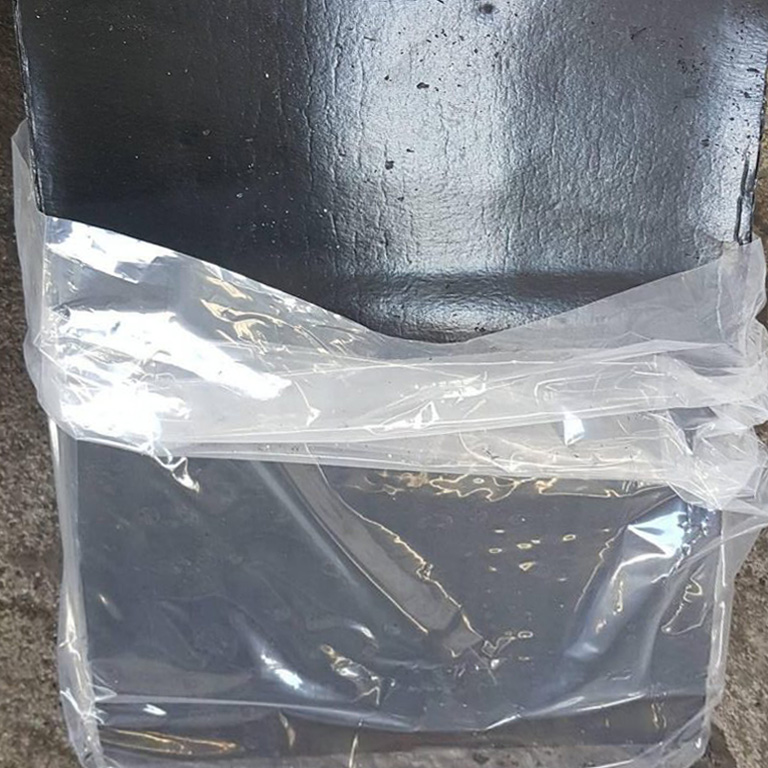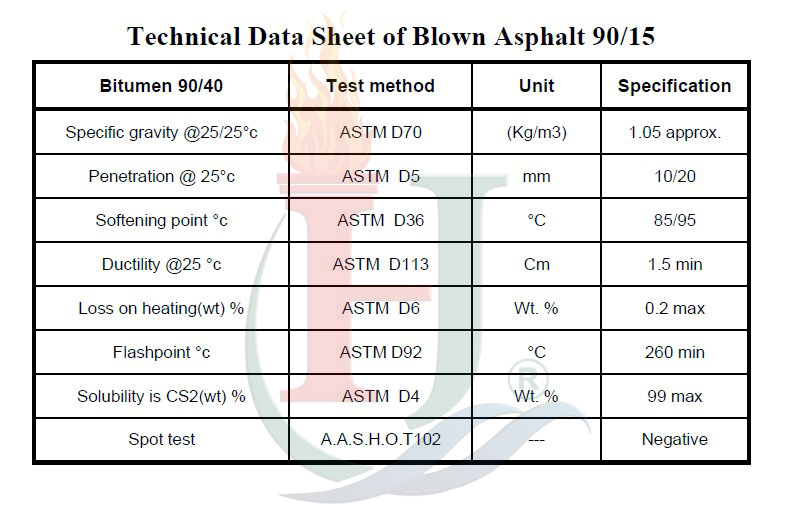Definition Of Oxidized Bitumen 90/15
At the bitumen production reactor, during the air acting, the mixture of the two Vacuum Bottom (VB) and Vacuum Silas (VS) feedstock is put under a special degree of pressure and temperature between 200-300˚C of which the hydrogen atoms content in bitumen molecular oxidize to oxygen of air, and obtains with higher hydrocarbons polymerization reaction that has lower penetration and higher softening points than the primary pure bitumen. This kind of bitumen 90/15 has the softening point of 90 and permeability of 15.
Oxidized bitumen is a specially formulated plastic for construction. Oxidized bitumen characterized by being a product of great thermal amplitude. Oxidized bitumen has the flexibility to cold, has no sag at high temperatures and has good adhesion. It can be applied in any kind of work. Oxidized bitumen is available in the different grade.

Applications Of Oxidized Bitumen 90/15
Oxidized bitumen 90/15 uses in the chemical, fuel, paints, lacquers, varnishes, paper-pulp-board, textile processing, road construction, pavement ,crack seal and repairmen, civil works, roofing, construction industries; sealing and insulating buildings, adhesive, construction materials additive, dust-binding, insulating and impregnating agent, make rubber and plastic products.
The Oxidized asphalt 90/15 products are for paving , also used in asphalt-based paints for corrosion protection of metals, in lining public works structures, adhesives in electrical laminates, base for synthetic turf; typical uses for oxidized bitumen 90/15 used also for water-proof application and corrosion resistance for pipe coating, Portland cement pavement, hydraulic applications, paint manufacturing, caulking, mastics, and damp proofing. Oxidized bitumen 90/15 is using insulation and isolation bitumen membrane sheet. Also, Car undercoating Automobile industry is specially required for Blown Asphalt. Vehicle undercoating material is based on Bitumen. Bitumen provides excellent waterproof, dust proof and noise proof for automobile undercoating.
Oxidized bitumen 90/15 should be heated double temperature against the softening point to be able to have flow and viscosity. To use oxidized bitumen 90/15, surfaces must be dry, clean and free of loose particles, formwork, curing products, irregularities, slurry, etc.
Storage & Handling Of Oxidized Bitumen 90/15
Heating of packaged bitumen is a critical phase in most of the final uses. Typically, the packaged material is heated and melted in boilers out on site.
However, control at the heating phase is very important in terms of health and safety as well as in maintaining the quality of the product.
Note must be taken of the maximum safe handling temperature of 230 C and this should not be abused. Bitumen is a poor conductor of heat, consequently, control of the heating phase is of paramount importance.
The Oxidized Bitumen material should be broken up prior to placement in the boiler. This exposes a larger surface area to the heat and encourages a more even heating regime. Without the larger exposed surface area, aggressive heating at the base and sides of the boiler may well result in localized overheating, altering the characteristics of the bitumen and potentially causing thermal cracking of the bitumen, creating the release of low lash vapors. The flash point of the oxidized bitumen then becomes irrelevant; as these low flash vapors determine the fire risk.
Melted bitumen should not be left in the boiler and reheated from cold, as there is then a high potential for localized overheating around the heating area (lack of convection means poor heat transfer) and potential development of a pressurized pocket of low flash vapors.
Be aware of the placement of any temperature monitoring or control devices. As a result of the poor thermal conductivity of the bitumen, a thermometer in the bitumen some distance from the heat source could read significantly different (even hundreds of degrees) from the true temperature of the bitumen near the heat source.









